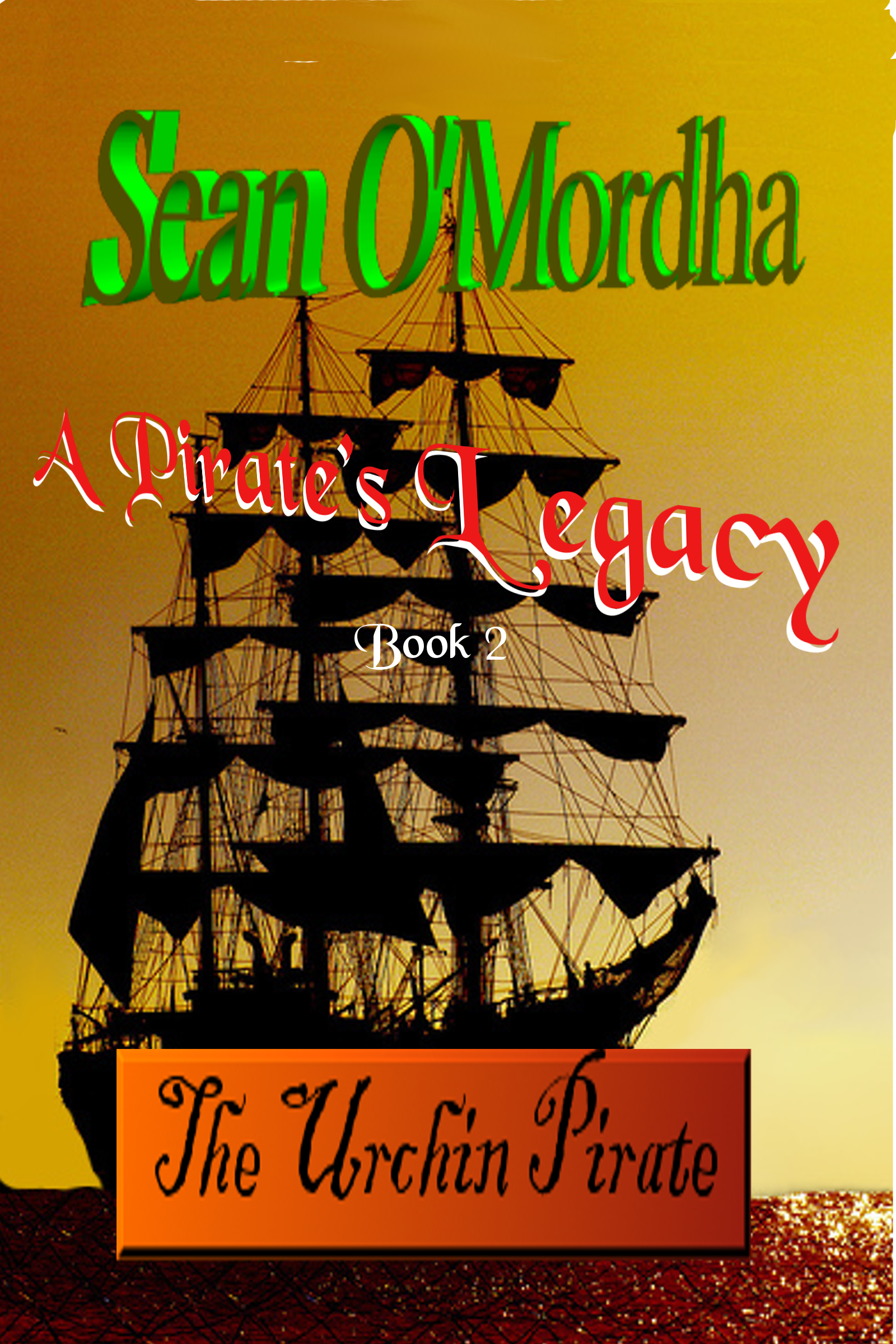My wife is responsible for planting the seed for a pirate story and I let it germinate for nearly a year inside my head. How authors give birth to a story is as varied as the stars, and I don't want to even attempt to address the issue, except for how it happens within me.
I am a mentalist. I will sit back in a lounger, preferably on the patio, close my eyes, and let ideas flow, mentally experimenting with various approaches. With that, I sit at the keyboard and begin typing. No outlines, few notes. I have done basic research (a lot more will come). this is called writing by the seat of your pants. My days as a journalist instilled that technique. This is how A Pirate's Legacy began, but the birth were twins--two stories, one set in our era and one in the early 1600's.
Originally,
the story was to be published as one edition containing two separate
novels, however I could see that would be too unwieldy, unless the reader was to become an Arnold Schwarzenegger or hospitalized
with a hernia. The idea was to alternate a David story with a Dolphin story, each pair being linked by certain events.
The overall story line is the story of a young man who is
the direct descendant of a famous pirate. While dead for 400 years, his
ancestor has not moved on to Davy Jone's Locker, the Fiddler's Green, the
hereafter, or whatever one desires to call existence after death. He
needs some special help to achieve that.
Book one occurs in our era and sets the story line where the two meet and begin the journey. The protagonist is David Dolephene who discovers he is the last direct, male descendant of the Pirate Francois (Dolphin) Evreux who operated in the very early 1600's. Because of a tragic mistake, the Dolphin is unable to move on to be with his family in the hereafter until repenting of this (and a couple other things). Since repentance is something that must be done while still alive, post-living penitence is decidedly more difficult and requires help from this side. In steps a reluctant David, who
eventually becomes caught up in the task that eventually leads him in a
life-long career of trying to aid his ancestor's salvation and stay
alive in the process.
Book two is the story of the Dolphin beginning as an orphaned six-year-old on the streets of St. Nazaire, France and progresses until
he is seventeen. During that time, he escapes the destruction of his
home (a pirate ship), arrives on the island of El Hierro in the Canary Islands, marries, becomes a father and wealthy land owner, is kidnapped, becomes an infamous pirate, and returns home where he makes a fatal mistake that eventually results in being in limbo until one of his progeny can work out his release.
I was not long into developing the theme when more ideas broke over the story like great waves, lending to hints becoming sprinkled throughout both stories. That's when it became necessary to start "outlining" the series so to avoid a ship wreck and keep everything orderly. Now, when I say outline, I don't mean A-B-C, a-b-c, a1-etc. Each additional story is put down as a somewhat details synopsis. In a couple cases, several chapters were roughed out. The idea was to alternate a David story with a Dolphin story, each pair being linked by certain events.
In the case of Book Six, Order of the Brethren, which is being used for exploration in this series of blogs, I drafted nine chapters. I have used very little of the material except as
a general direction because of additional research providing more
color, and having learned some techniques I wanted to implement.
The problem with such an undertaking spanning a period of time is keeping everything consistent both between stories and within stories. Admittedly, I am concrete sequential. That's how my stories flow, from point A to B to C with flashbacks to fill in some holes. That requires a timeline. As said, the Dolphin series begins with Francois as a six-year-old. What happens to him is charted onto a lineal chart briefly describing the major events, dates, and his age.
Putting together a story in one novel is easy, not so easy when considering how much a writer must remember and juggle as the plot thickens. Of course, the spinning of a yarn naturally involves characters. I'll explore a bit that next.


No comments:
Post a Comment